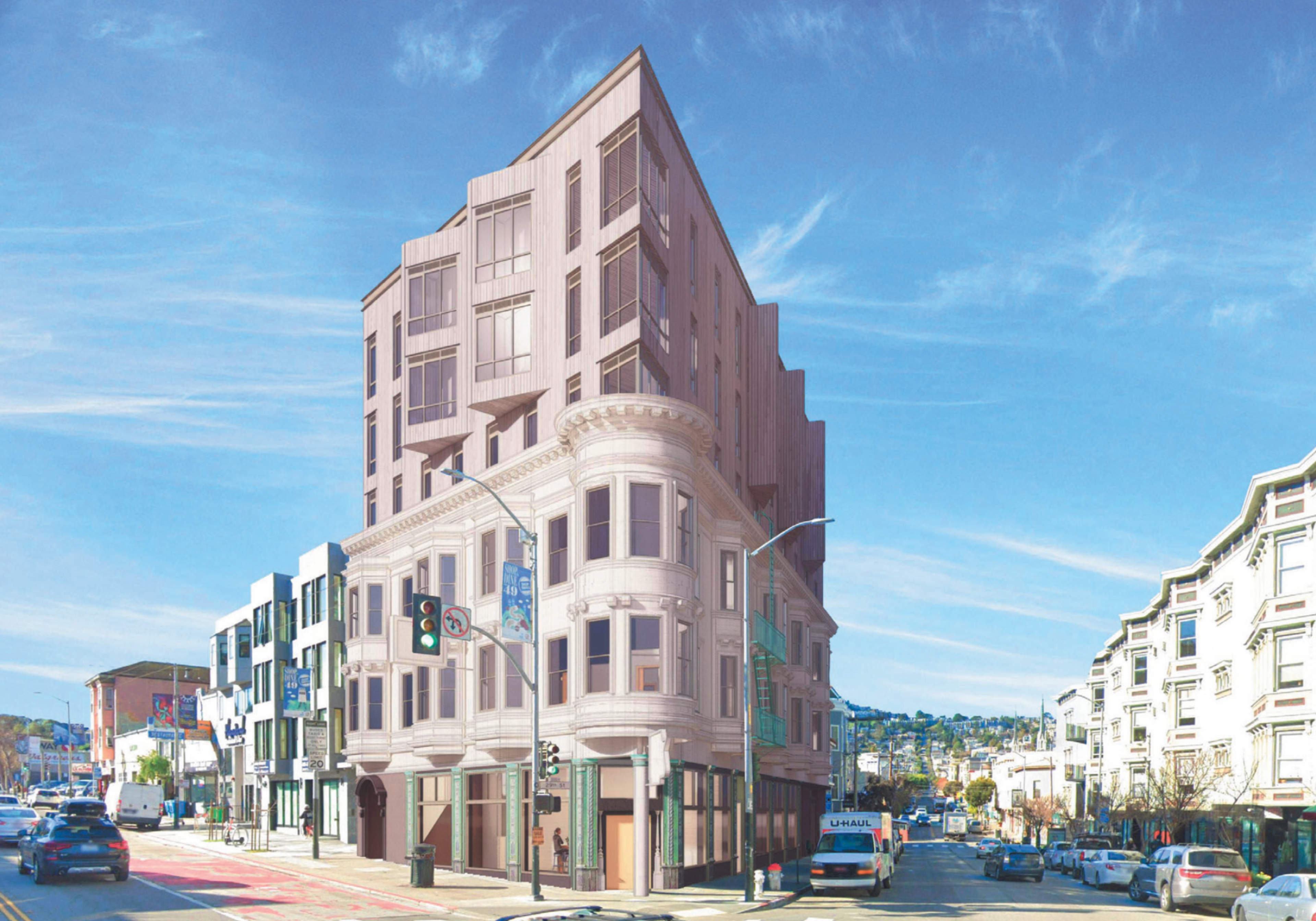A newly unveiled proposal offers a first look at planned affordable housing over a former San Francisco bar destroyed in a fire.
The owner of a building at 3300 Mission St. aims to turn the building—which was heavily damaged by a 2016 fire (opens in new tab) that closed its ground-floor bar, the 3300 Club—into 35 below-market-rate studios.
The building is now vacant after the fire rendered it uninhabitable. Nearly the entire building, except for the facade along Mission and 29th streets, will be demolished due to the damage, according to plans filed with the city on Oct. 25.

The building would be increased from three to six stories, pushing it up to nearly 74 feet high.
The planned studios would be between 200 and 350 square feet, and the ground floor would have 692 square feet of commercial or retail space. The plans don’t mention what would fill the ground-level space.
Plans say the top floor would have a 790-square-foot roof deck. The basement would have 200 square feet of bike parking and a 218-square-foot laundry room.
The units would target rents to be affordable to households earning between 30% and 80% of the Area’s Median Income, or between $30,250 and $80,700 (opens in new tab) for a one-person household, according to the San Francisco Mayor’s Office of Housing and Community Development.
A loan application (opens in new tab) filed with the city in October pegs the total development cost (opens in new tab)—which includes construction, demolition and equipment—at just over $35 million.
Ruth Maginnis, who said she has lived in San Francisco since 1942, told The Standard she liked that the new building would preserve the original facade, but took issue with the design.
“It would be nice if they matched the upper stories with the lower ones,” she said. “That’d be more acceptable.”

Hanif Sadr, head chef at Persian restaurant Komaaj, which lies just across the street from the planned housing project, said he thinks having more apartments near him would bring more diners to his restaurant. He also hopes that whatever business opens on the bottom floor will serve the community, such as another bar or restaurant.
“Any type of business that draws people here, I think it would be good for the neighborhood,” Sadr said. “Not some high-end watch shop or something that has five or 10 customers but doesn’t add to the neighborhood.”

While plans say the original facade of the building will be preserved, it makes no mention of the 3300 Club’s iconic sign.
San Francisco Planning Department spokesperson Dan Sider said the plans show there will be a sign where the current 3300 Club sign is today, but that there are no details about whether it will be the original sign or what it would otherwise say.
“More often than not, signage is one of the last aspects of a project, oftentimes being finalized after major construction concludes, once a commercial tenant has been identified,” Sider explained in an email.
Owner Andre White did not respond to requests for comment.
